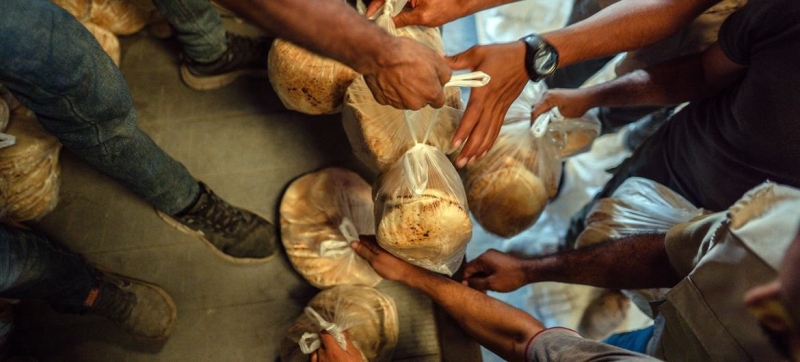- WHO Says Traditional Medicine Use Surges Worldwide |
- UN Report Calls for New Thinking to Secure a Sustainable Future |
- BNP moves to finalise seat sharing as alliance friction grows |
- BNP plans universal 'Family Card' for all women: Tarique Rahman |
- Tangail saree weaving gets recognition as intangible cultural heritage |
UN Warns of Worsening Hunger Crisis Threatening Millions

Freshly baked bread is handed out to people in Deir al-Balah, Gaza.
The UN Food and Agriculture Organization (FAO) and the World Food Programme (WFP) have warned of a major hunger emergency, with acute food insecurity expected to worsen in 16 countries and territories between now and May 2026 — putting millions of lives at risk.
A report released by the two UN agencies on Tuesday identifies six areas at the highest risk of famine or catastrophic hunger: Sudan, Palestine, South Sudan, Mali, Haiti, and Yemen. In these regions, some communities are projected to face famine or near-famine conditions.
Other countries of very high concern include the Democratic Republic of the Congo, Myanmar, Nigeria, Somalia, Syria, and Afghanistan. Additional hotspots include Burkina Faso, Chad, Kenya, and the Rohingya refugee camps in Bangladesh.
‘Famine is not inevitable’
Acute food insecurity occurs when families cannot meet their basic food needs and resort to desperate measures such as skipping meals or selling essential possessions. At the most severe levels — Phase 4 (Emergency) and Phase 5 (Catastrophe/Famine) — hunger becomes life-threatening.
“Famine is not inevitable,” said Cindy McCain, WFP Executive Director. “We have the tools and the knowledge to prevent it, but we need the resources and the political will to act now.”
Children are among the most vulnerable. Malnutrition weakens their immune systems, making them more susceptible to disease and death. The report warns that delayed action will cost lives and increase humanitarian expenses.
What’s driving the crisis?
The report identifies four main causes behind the worsening situation:
Conflict and violence: The leading factor in 14 of the 16 hotspots.
Economic shocks: Fragile economies, rising debt, and soaring food prices.
Climate extremes: Floods, droughts, and cyclones linked to La Niña conditions.
Reduced humanitarian aid: Funding shortfalls have forced ration cuts and limited malnutrition treatment.
“Conflict remains the single biggest driver of hunger,” said Qu Dongyu, FAO Director-General. “But climate shocks and economic instability are compounding the crisis, leaving millions with no safety net.”
What needs to happen now
FAO and WFP have called for urgent global action to prevent famine, including:
Expanding humanitarian assistance to save lives and livelihoods.
Implementing anticipatory action — early interventions before crises escalate.
Investing in resilience programmes to address root causes, not just symptoms.
The agencies warned that the international community faces a rapidly closing window to act. Failure to respond promptly will deepen hunger, destabilise regions, and lead to preventable deaths.

